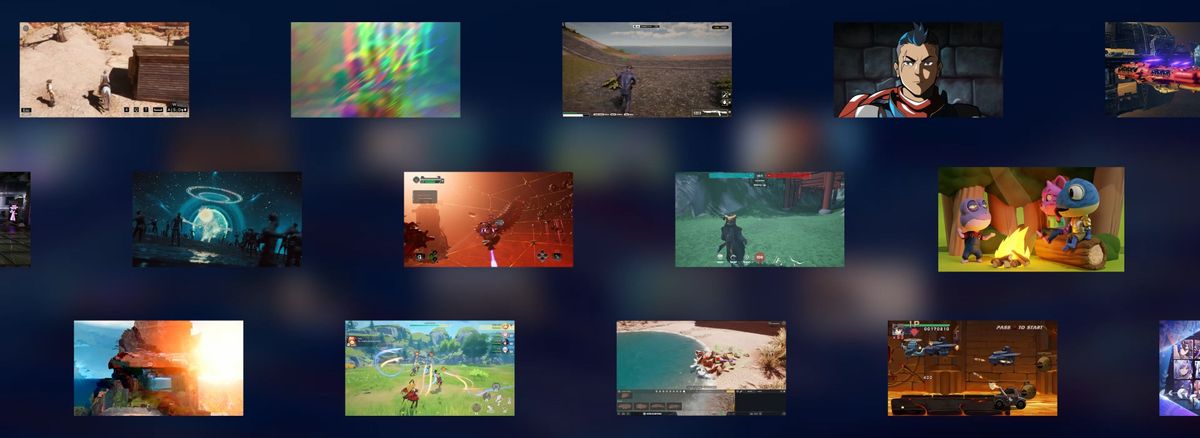Sui Enables What’s Next in Games
Five key pillars—functionality, ease of use, speed, scale, and cost—make Sui a perfect fit for gaming

As the gaming industry becomes increasingly competitive, blockchain technology offers game studios the edge necessary to keep their audience's interest. In fact, blockchain technology may hold the key to designing the most enjoyable and engaging games in the future. Games are best when they are immersive, bringing players deep into their worlds. They use visuals, storytelling, and community building to captivate players and entice them to participate in continuous and regular play. Blockchains have the ability to add new layers to the gaming experience, but only if the infrastructure used has the features and functionality to fulfill its technological promise. Sui is the only blockchain whose technology provides the five pillars needed by studios to scale a game without breaking the bank.
More control, more engagement, more value
By enabling asset ownership and deeper community connections, blockchain technology has the potential to create games that are more attractive to players than those built with current infrastructure.
In-game assets are big business in video games. Whether for aesthetic or functional reasons, players are willing to spend significant sums of money to alter or improve their gaming experience. According to Roman Kuzmin, CEO and Co-founder of GameValues, “the global market for the sale of in-game items was $129 billion” in 2022, and set to grow. Less than 3 percent of that market was captured by games built with Web3 infrastructure. Kagan, a media research group, estimates that in 2022 “publishers made $3.64 billion in revenue from non-fungible tokens [aka digital assets] connected to items for use inside of video games.” They believe that number will grow fivefold in the next four years.
Traditional game item purchases take place within the game or on third party marketplaces. Game developers are not connected to the sales process on these marketplaces, increasing the risk of fraud or counterfeit items being sold. Third party marketplaces also remove the opportunity for the original creator of the item to earn royalties from resale.
Using digital assets, a feature of blockchain technology, as in-game items gives both players and game studios more control. Users actually own their digital assets which are stored, ideally, on-chain rather than within the studio’s servers. Not only are they accessible in and outside the game but people can trade and transfer them as they see fit, and the assets themselves can outlive a game’s life cycle as collectibles once the game shuts down. Digital assets allow players and studios alike to verify authenticity as well as monetize secondary trading interactions through embedded royalty systems, creating increased revenue potential for every asset. This opportunity, along with the potential for a longer game lifecycle due to increased engagement, improves the long-term value of each player.
The critical components of building great games
To build games that offer the fun and engagement demanded by players at the scope needed by game developers, a blockchain must provide five key attributes: well-rounded functionality, Web3 abstraction, scalability, speed, and low cost. Sui hits all five.
Functionality
Object-based architecture
Sui uses objects as its basic unit of data storage rather than accounts, as happens on most other blockchains. Developers define, create, and manage these programmable objects that represent user-level assets. An object has distinct attributes, including ownership, whose values can be updated based on the governing logic of the smart contract that created it. Although a smart contract creates an object, it does not store the object. Objects and their metadata are stored directly on-chain.
Dynamic and nested assets
Sui’s object-oriented data model allows digital assets to have two unique properties: the ability to transform without having to create a new contract (dynamic assets) and the ability to own other assets (nested assets). Dynamic assets can evolve through gameplay without having to use any system hacks or lose any data. All assets can retain their rich history. Nested assets create an asset hierarchy that fits within the gaming experience. For example, an avatar can own a cloak that could earn and own patches to symbolize gaming achievements. This nesting structure allows for greater customization for users as well as the opportunity for game developers to sell bundled assets to users.In addition, nesting assets creates clear and consolidated metadata. On most EVM chains, this type of composability would require two or more assets to be burned in order to “combine” them into a new asset, completely losing its provenance. On Sui, you can nest and decouple assets freely without ever losing any of the original history. Assets can be both collectibles, with rich and long histories, while still retaining the necessary functionality.
Customizable, embedded transfer policies through Kiosk
Sui Kiosk, a primitive on Sui, offers creators the ability to set the terms for trading their assets. These terms include setting royalty payments but extend far beyond—all aspects of sharing, selling, and managing assets can be customized. For example, an asset creator can define the rules so that an in-game asset must be held for a certain time before it can be sold. Kiosk’s shared liquidity layer allows developers to use whichever Kiosk-based embeddable marketplace they desire because assets listed by players for sale or trade in-game will also automatically be listed on all other Kiosk-based external marketplaces. All in all, Sui Kiosk offers greater flexibility and control for creators, which could include the game studios, third-parties, or players.
Web3 abstraction
People don’t want to have to become Web3 experts just to play a great game. Sui has native features such as zkLogin and sponsored transactions that remove complications from the gaming experience and allow players to jump in without hesitation. Users can create an account using their existing web credentials from companies such as Google and Twitch, and the game studios can pay for any gas fees associated with transacting in the game. No blockchain knowledge needed.
Scalability, speed, and predictably low cost
Sui is not only one of the fastest chains out there, with subsecond finality for most transactions on chain, it is capable of handling almost 300K transactions per second. This combination of facts means gameplay can progress at the speed players need. In addition, horizontal scaling combined with Sui’s unique gas pricing mechanism allows the Sui network to meet demand as it arises without an associated spike in fees. These low and predictable costs allow game studios to accurately model their infrastructure costs.
Ready to build?
Learn more about Sui gaming on our Play Beyond hub and get started building with Sui docs.



